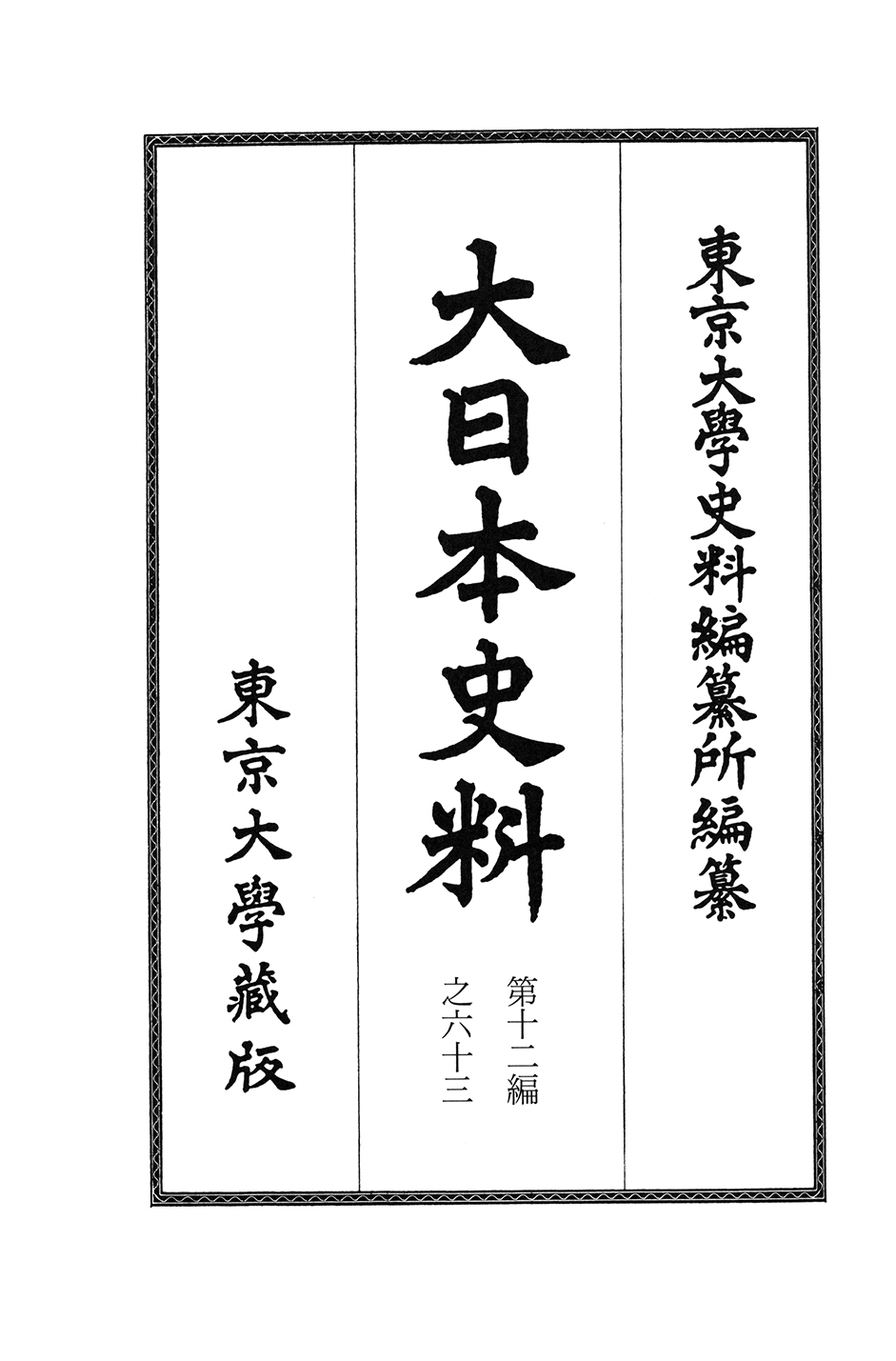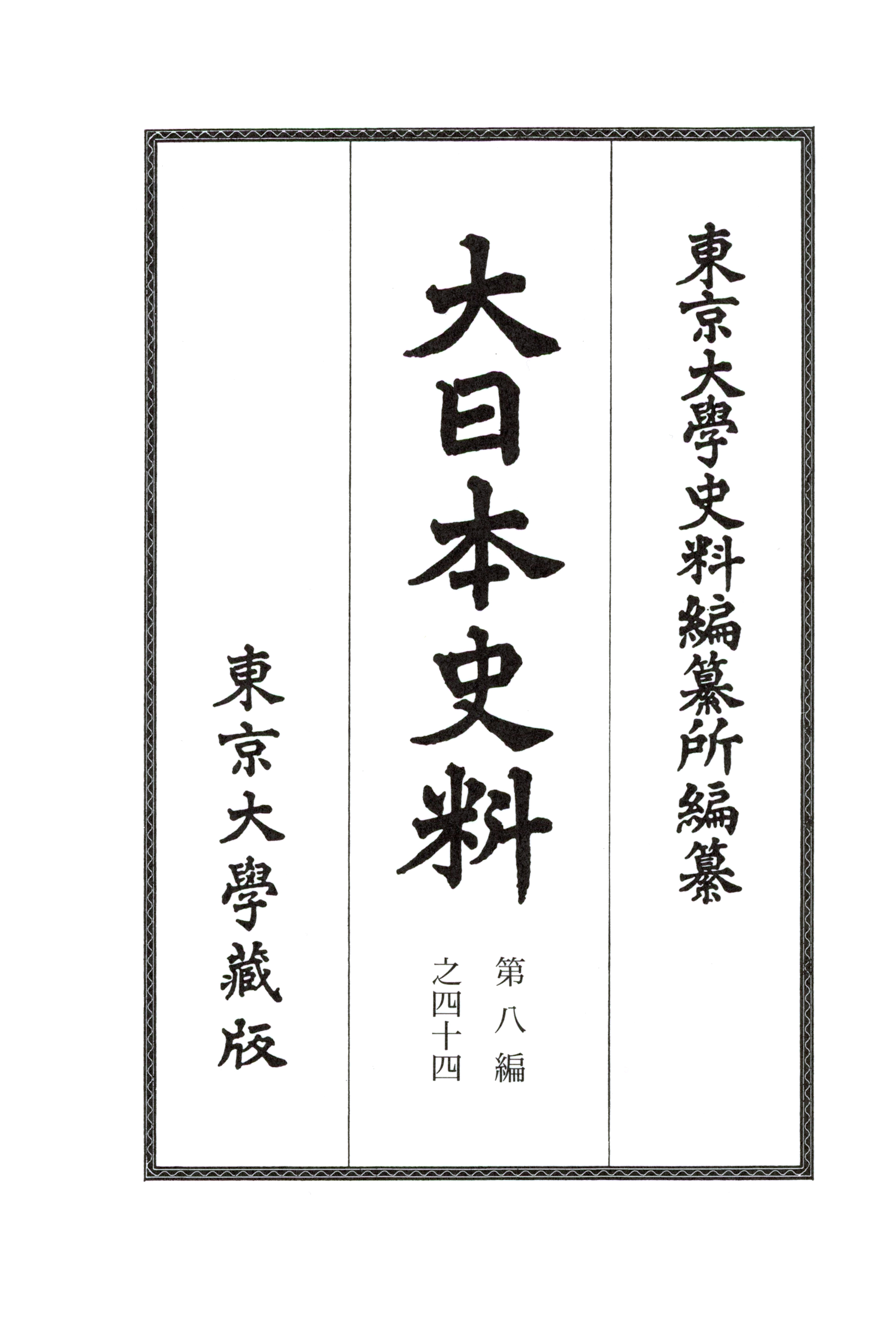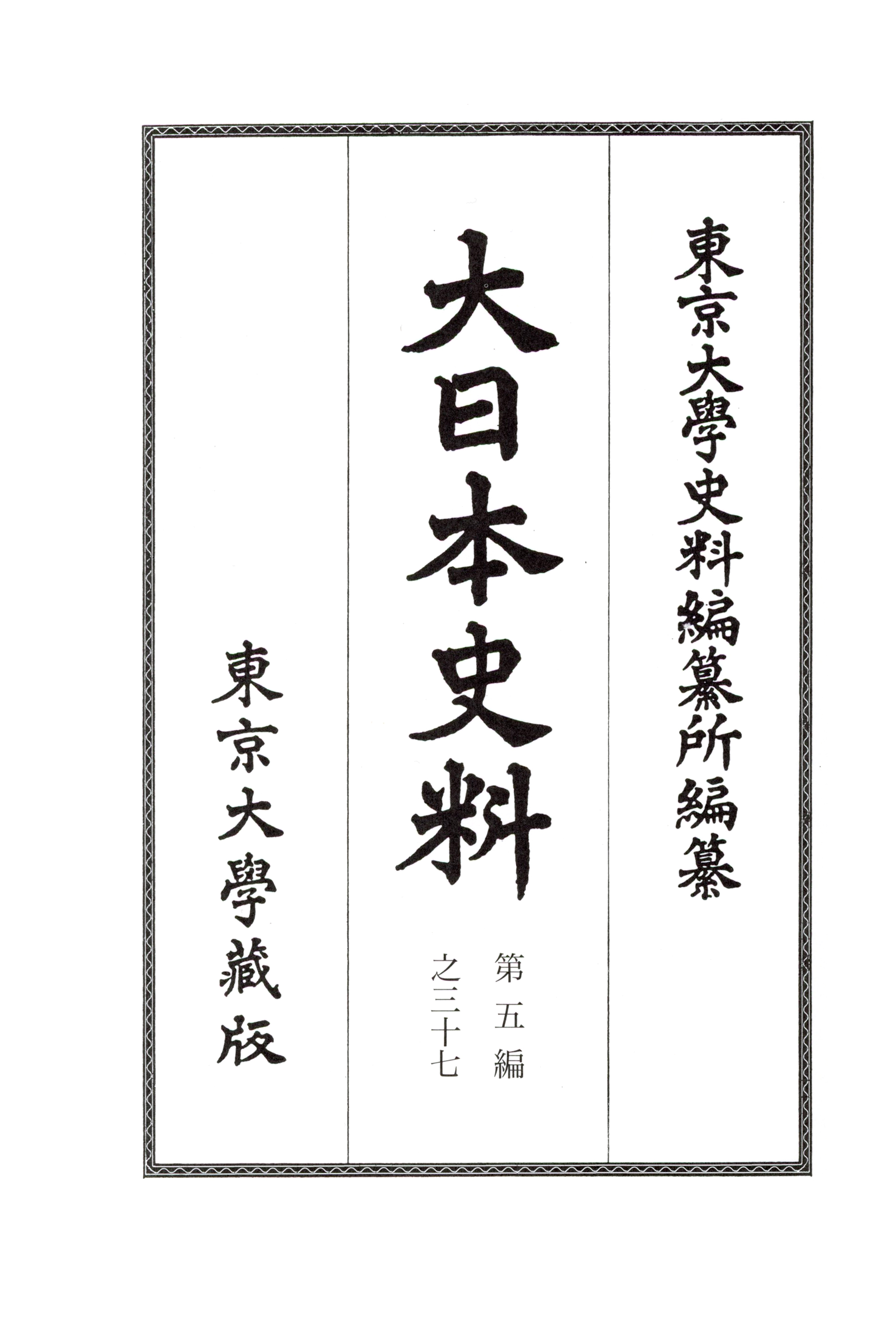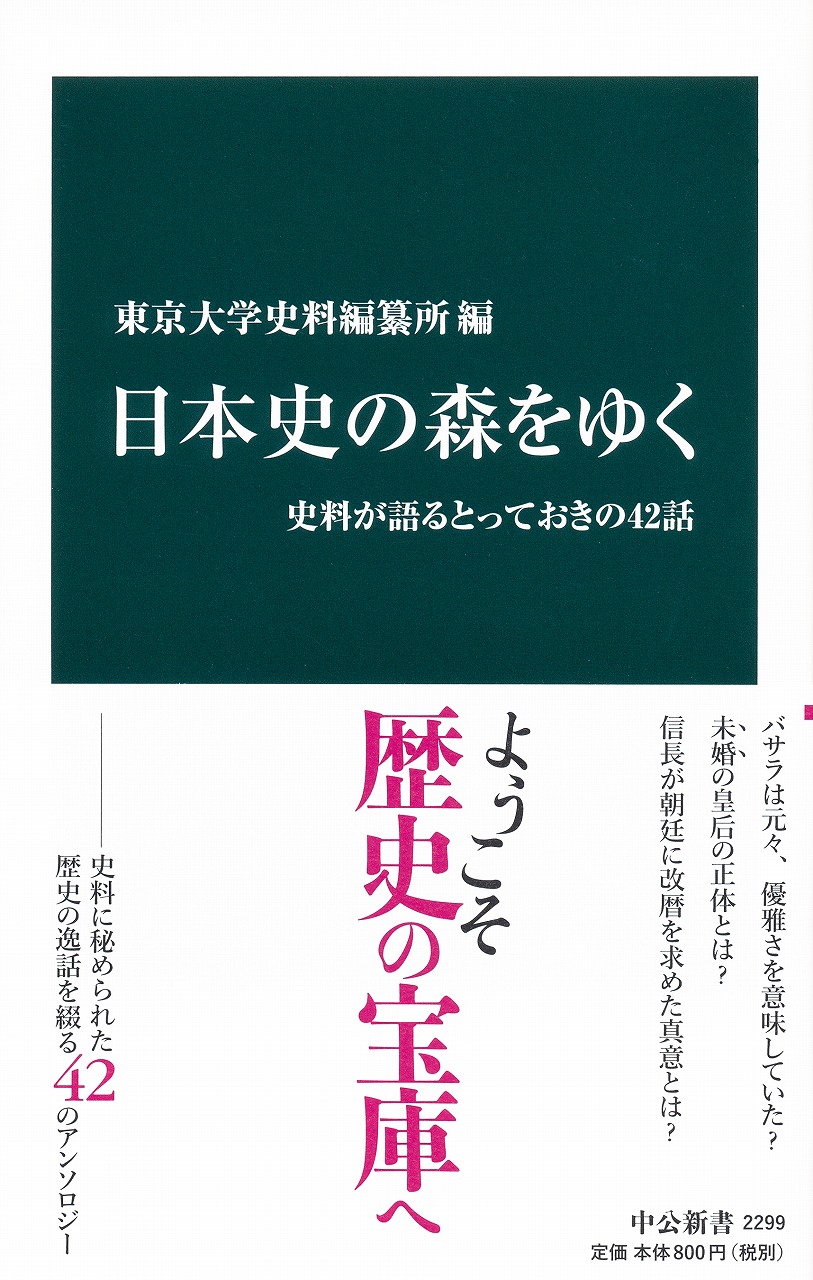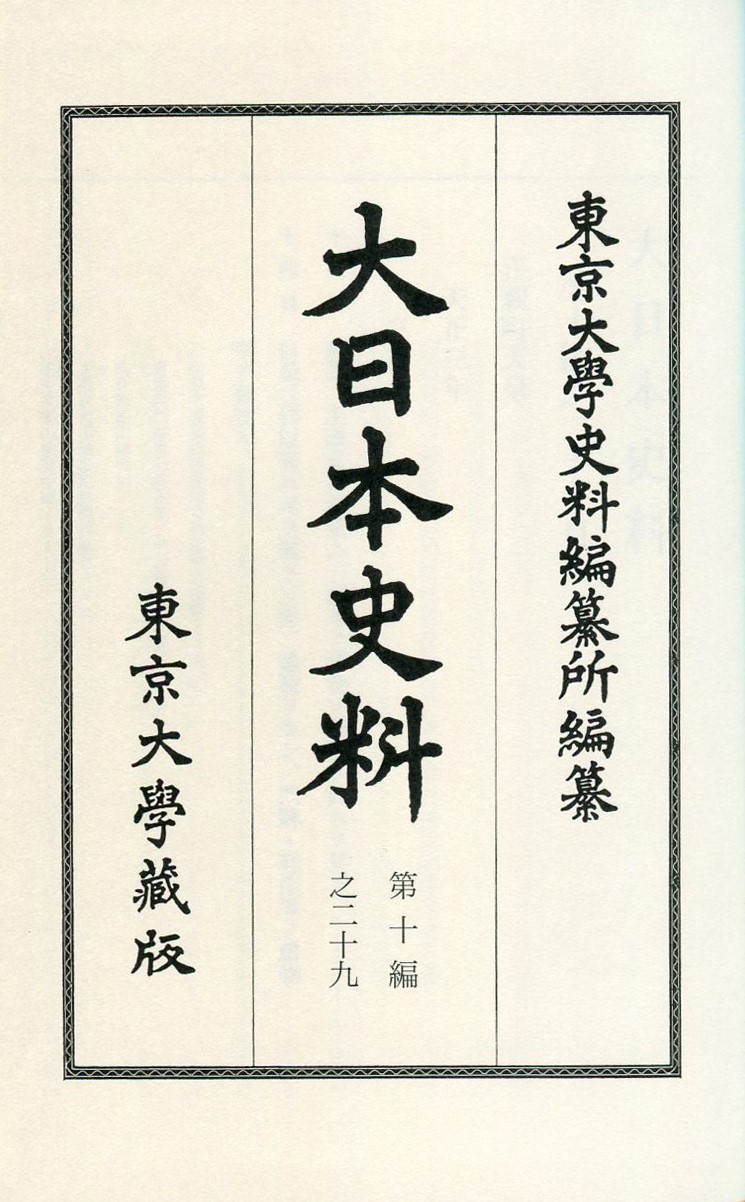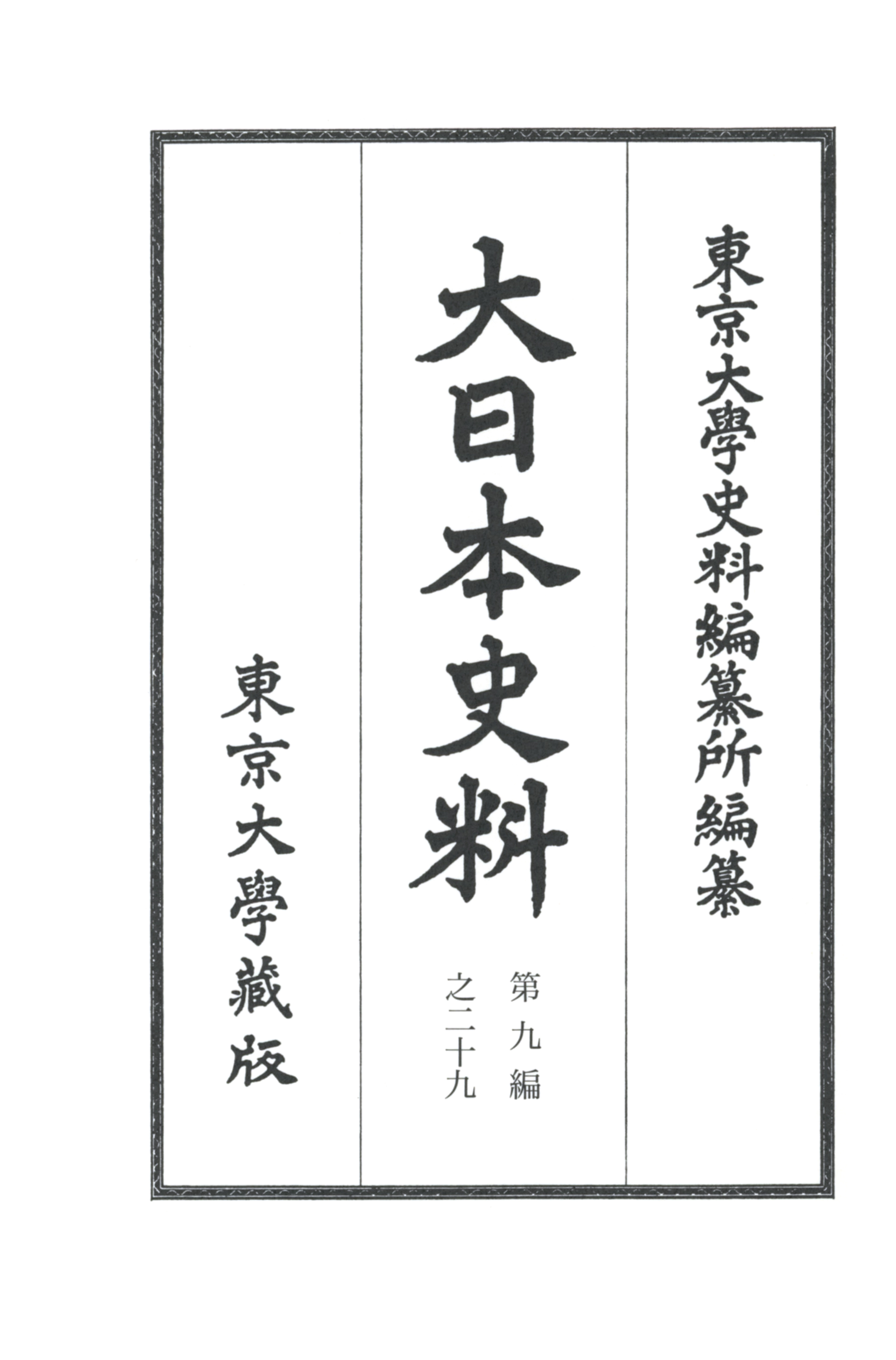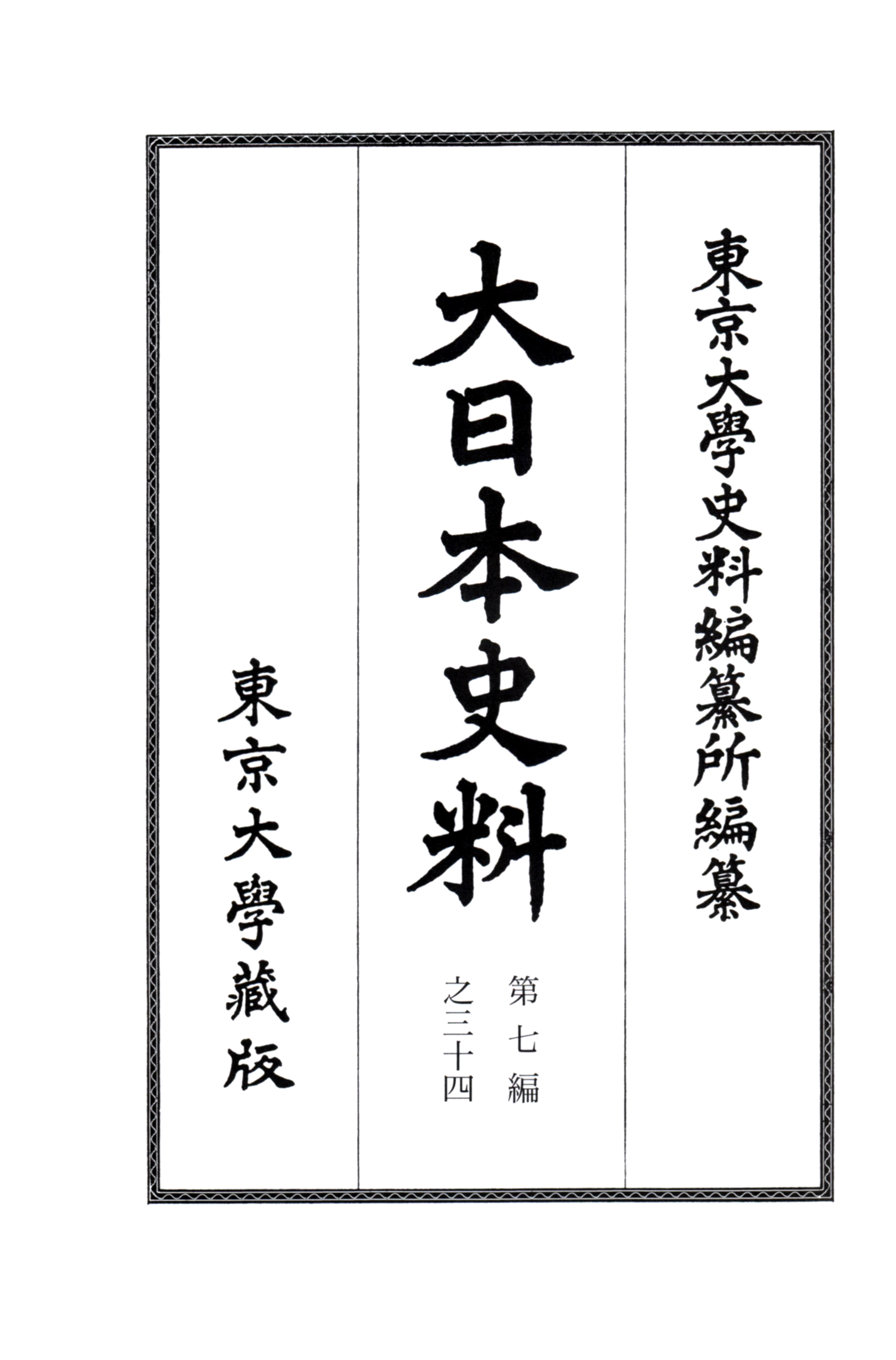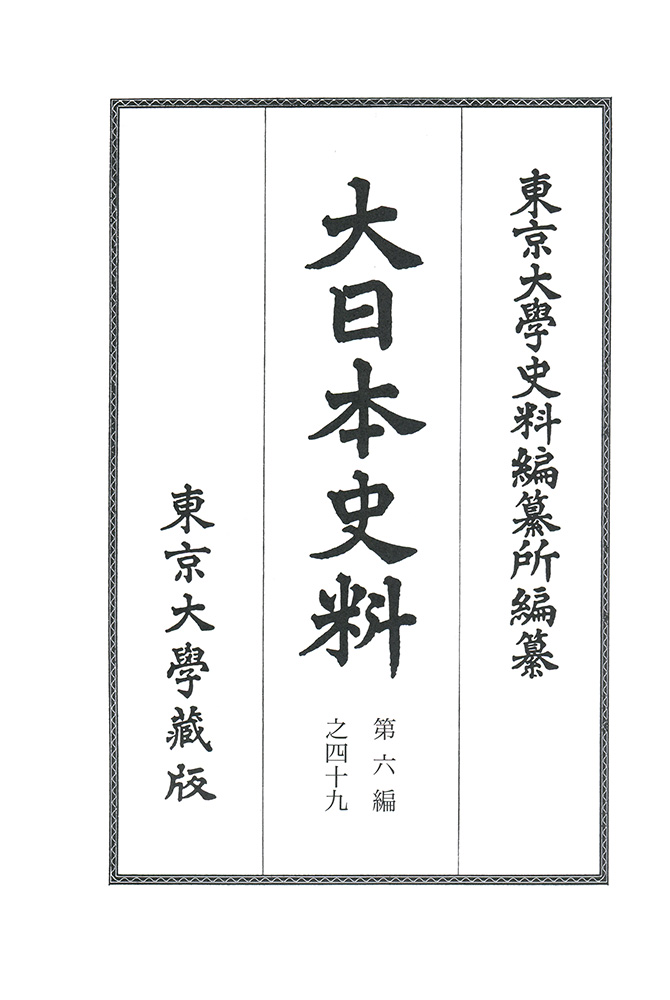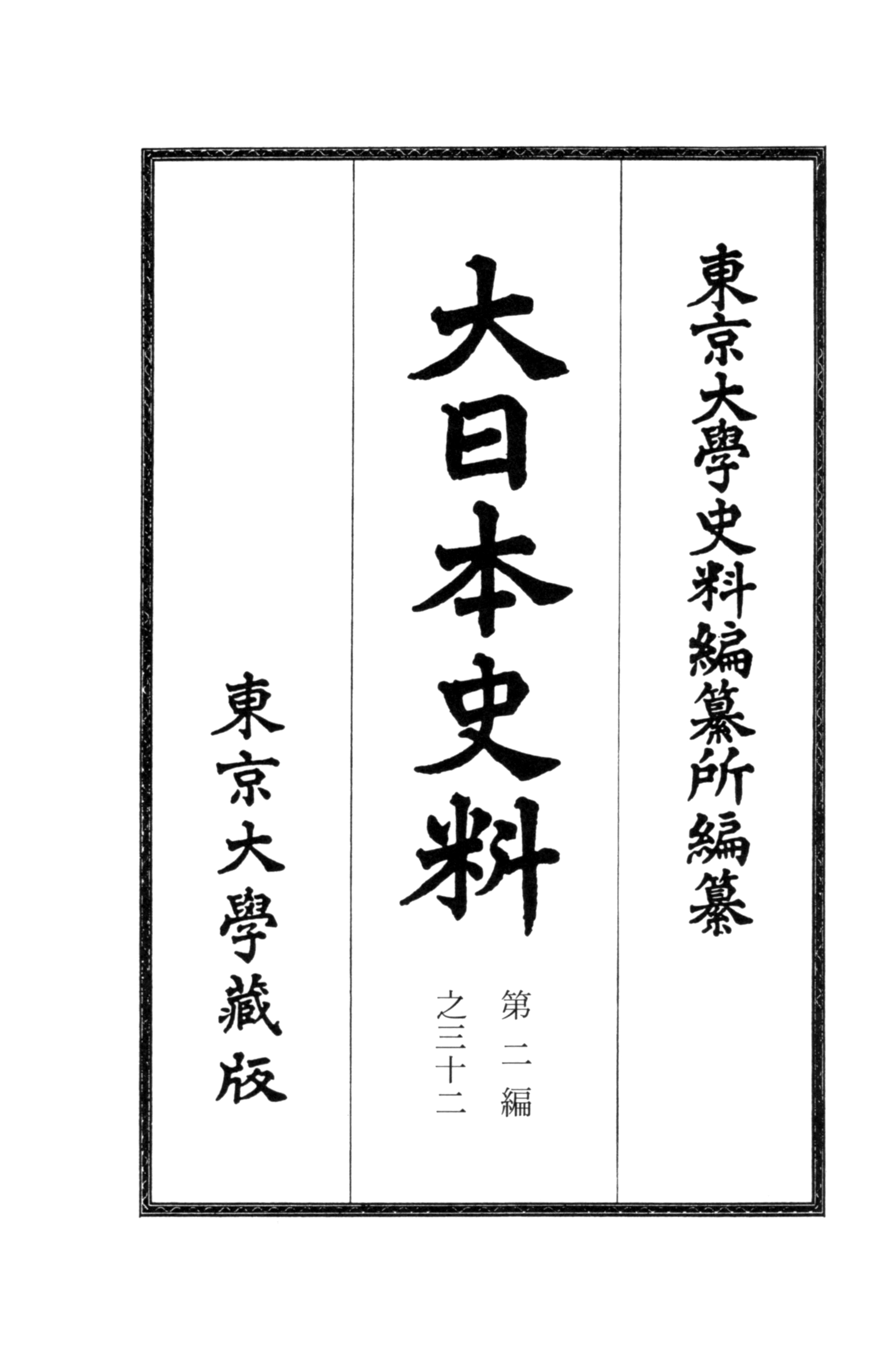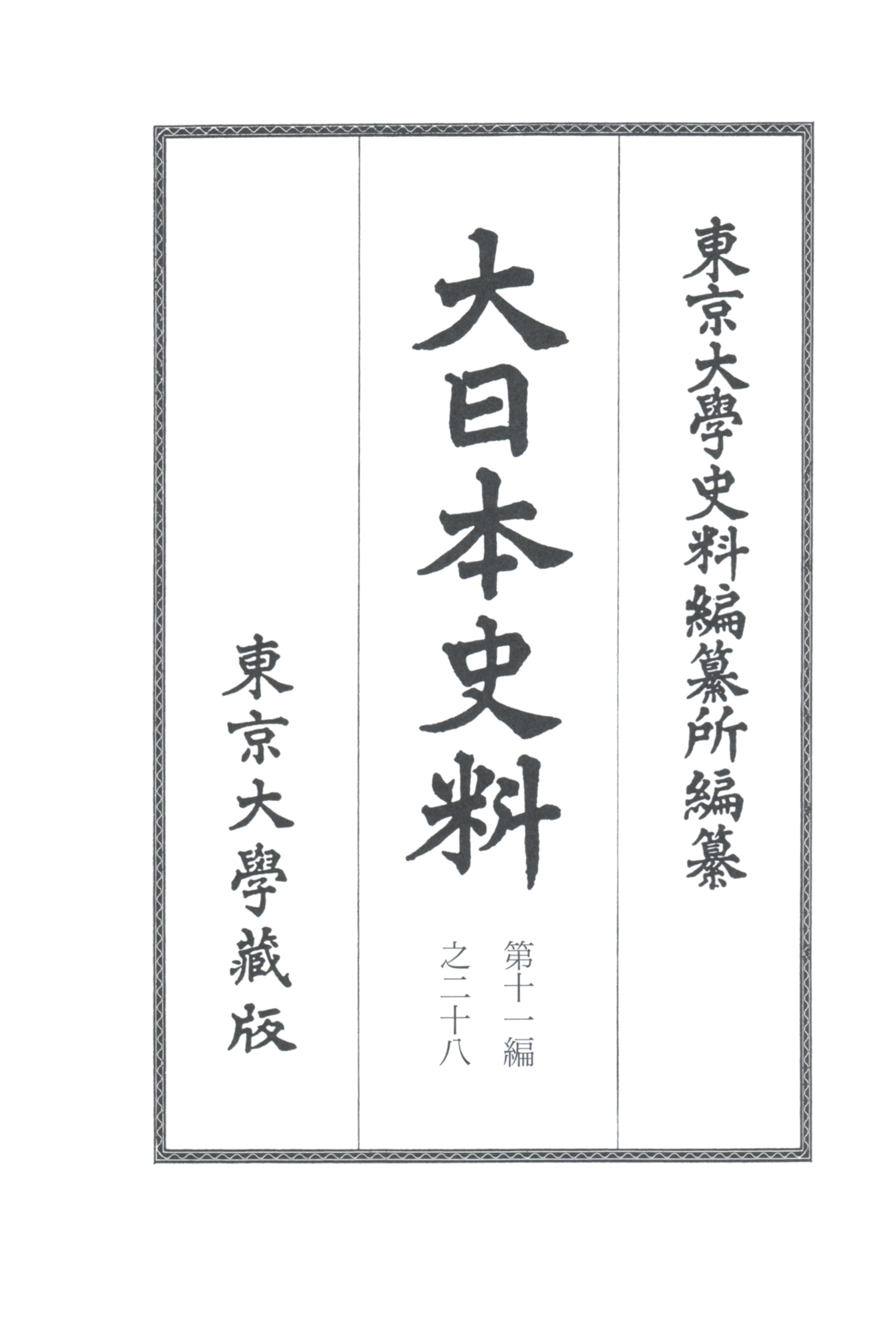
Title
Dai-Nihon Shiryo: Dai 11 no 28 (Chronological Source Books of Japanese History: Volume 11, Number 28)
Size
484 pages, A5 format
Language
Japanese
Released
September 10, 2018
ISBN
978-4-13-090528-2
Published by
University of Tokyo Press
Book Info
See Book Availability at Library
Japanese Page
Chronological Source Books of Japanese History is a series of books that arrange various events in Japanese history in chronological order and bring together historical sources (old letters, diaries, etc.) that describe these events. The originals of many of these historical sources were written with writing brushes in cursive characters, and these have been deciphered and typeset in standard characters. The compilation of this series began more than one hundred years ago, and it continues to be produced in the original style. The writing style of the explanatory sections, the typeface, and so on have remained the same, and consequently the final product gives an impression of weighty substance.
The series is divided in accordance with the periodization of Japanese history into twelve volumes, and volume 11 deals with the time of Toyotomi Hideyoshi. This book covers events from the first to third months of 1586 (Tenshō 14).
At the time Hideyoshi already occupied the position of regent and exercised absolute power in Kyoto, Osaka, and the surrounding region. Starting from the second month of 1586, he began to deploy a large workforce and large quantities of building materials for the construction of his own castle and residence, and this demonstrates his great power at the time. This book includes not only various accounts of the construction work but also related historical sources such as instructions in which Hideyoshi prescribed in detail how building stones were to be transported.
Jesuit missionaries also visited the castle during its construction and wrote a detailed account of their visit. This account is, of course, not written in Japanese, nor are the dates given in accordance with the traditional Japanese calendar, and so it has been translated into Japanese with the dates converted into those of the traditional Japanese calendar. The Historiographical Institute has staff who deal with sources on Japanese history preserved overseas, and this section could be said to be the fruit of collaboration with these staff members.
In addition to the above-mentioned instructions, Hideyoshi also issued a code for officials and peasants on how to collect and pay the annual land tax, on the clothes to be worn in accordance with social status, and so on. This is a lengthy code consisting of eleven articles, and since it seems to have been issued simultaneously in various parts of Japan with virtually the same wording, several versions of this code are known, and they have all been included in this book side by side. Since they come to a considerable number of written characters in total, one can imagine the work they would have entailed for the clerical staff supporting Hideyoshi. Although the different versions are virtually identical in wording, there are many minor differences, perhaps because the task of copying them was shared by several staff members.
Around this time Hideyoshi frequently socialized with court nobles, showing them a portable gilded tearoom and having them write poems about cherry blossoms. Several court nobles described the tearoom in their diaries, and about seventy poems were written, which Hideyoshi then brought together in an anthology. These historical sources have also been included in this book.
When considered in this light, it may seem that peace prevailed at the start of 1586. But in actual fact Hideyoshi’s rivalry with Tokugawa Ieyasu had been deepening since the end of the previous year, and he was making preparations for large-scale military action to defeat Ieyasu. But towards the end of the first month Ieyasu signalled his allegiance to Hideyoshi, and so in the end military action was not taken against him. The way in which tensions rose and then the situation was suddenly resolved can be confirmed in the pages of this book. Further, even though Hideyoshi wielded absolute power in Kyoto, Osaka, and the surrounding region, there were also daimyō in distant regions who still had minimal contact with Hideyoshi, and they were searching for ways in which to deal with him. One can learn about these efforts, too, in this book.
(Written by KAMOGAWA Tatsuo, Professor, Historiographical Institute / 2018)



 Find a book
Find a book



